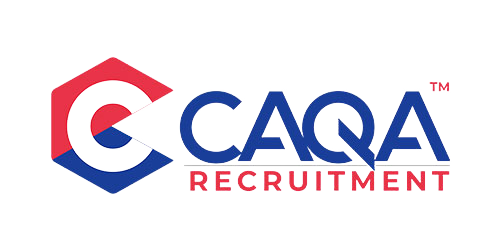The implementation of the Standards for Registered Training Organisations (SRTOs) 2025 signals a transformative moment for Australia’s vocational education and training (VET) sector. For Registered Training Organisations (RTOs), this presents a chance to move beyond traditional compliance practices and foster a culture of quality, innovation, and continuous improvement.
A robust gap analysis is at the heart of this shift. This article outlines ten actionable strategies to ensure your RTO not only complies with the new standards but also thrives in the evolving regulatory landscape.
1. Establishing a Culture of Ethical Integrity
Compliance begins with an unwavering commitment to ethical practices. For RTOs, this means creating an environment where integrity is at the core of all operations.
To embed this culture:
- Develop clear policies on ethical behaviour and compliance expectations.
- Train staff regularly on ethical decision-making and the broader purpose of compliance.
- Establish mechanisms for reporting unethical conduct and ensuring accountability.
Ethical practices safeguard the RTO’s reputation and foster trust among students, employers, and regulators, forming the foundation of sustainable compliance.
2. Prioritising Impact Over Processes
While traditional audits often focus on whether procedures are followed, the SRTOs 2025 emphasises the importance of outcomes. It’s not just about ticking boxes; it’s about demonstrating that your actions make a measurable difference.
To achieve this:
- Shift focus from "What are we doing?" to "What impact are we achieving?"
- Evaluate whether training programs improve students' skills and employment prospects.
- Collect data that evidences your organisation's positive educational outcomes.
This results-driven approach not only aligns with ASQA’s expectations but also ensures your RTO delivers value to learners and industry stakeholders.
3. Engaging in Continuous Professional Development
The VET sector evolves rapidly, and staying informed is crucial for effective compliance. Continuous professional development empowers staff to adapt to changes, meet emerging challenges, and contribute to the RTO’s objectives.
Steps to implement this:
- Provide access to regular training on compliance updates, educational trends, and best practices.
- Encourage trainers and assessors to engage in industry networking and professional learning.
- Develop pathways for staff to share their knowledge and apply it to organisational improvements.
A well-informed workforce is the backbone of compliance excellence and operational resilience.
4. Leveraging Data Analytics for Informed Decision-Making
Data is a powerful tool for compliance and operational efficiency. By harnessing analytics, RTOs can monitor compliance, identify trends, and proactively address potential issues.
To optimise data use:
- Invest in systems that integrate LMS and SMS for comprehensive data analysis.
- Use dashboards to track metrics like student progression, completion rates, and compliance gaps.
- Regularly review analytics to refine policies, processes, and training delivery.
Data-driven insights enhance decision-making, demonstrating your RTO’s commitment to evidence-based compliance and continuous improvement.
5. Aligning with Future Regulatory Trends
The regulatory environment is constantly shifting, and anticipating future priorities is vital for sustainable compliance. ASQA’s regulatory strategy offers valuable insights into potential areas of focus.
Actions to prepare for future trends:
- Analyse ASQA’s strategic direction to align your practices with their long-term objectives.
- Evaluate your policies and procedures against emerging compliance themes.
- Build flexibility into your systems to adapt quickly to regulatory changes.
This forward-looking approach positions your RTO as a proactive leader, ensuring long-term alignment with compliance requirements.
6. Enhancing Collaboration Across Teams
Compliance is not a task for one department—it requires the collective effort of the entire organisation. Collaborative initiatives foster innovation, streamline operations, and improve compliance outcomes.
Strategies for fostering collaboration:
- Establish cross-functional teams, including trainers, administrative staff, and leadership.
- Organise workshops to brainstorm and co-create solutions for compliance challenges.
- Promote open communication to ensure all staff are aligned with organisational goals.
Collaborative compliance fosters a shared sense of responsibility and drives innovative solutions that strengthen your RTO’s operations.
7. Conducting Comprehensive Systems Integration
Technology can enhance efficiency, but only when systems work together seamlessly. Disjointed systems can create inefficiencies that undermine compliance efforts.
Key steps to improve integration:
- Conduct a thorough review of how your LMS, SMS, and compliance tools interact.
- Address gaps to ensure data flows smoothly across platforms.
- Automate reporting processes to reduce errors and save time.
Integrated systems enhance data accuracy, streamline operations, and simplify the compliance audit process.
8. Embedding Continuous Improvement Practices
Compliance is not a static goal—it’s an ongoing process of evaluation and enhancement. By embedding continuous improvement cycles, RTOs can ensure sustained quality and compliance.
To embed continuous improvement:
- Establish regular reviews of policies, procedures, and training practices.
- Act on feedback from students, staff, and industry partners.
- Monitor progress against improvement goals and adjust strategies as needed.
This proactive approach creates a culture of excellence and resilience, positioning your RTO as an industry leader.
9. Strengthening Transparency and Communication
Clear communication is essential to ensuring everyone understands their role in compliance. Transparency also fosters trust among stakeholders, from staff to regulatory bodies.
Steps to enhance transparency:
- Develop clear, accessible documentation for policies and procedures.
- Communicate compliance objectives and progress through regular updates.
- Use plain language to ensure all stakeholders can easily understand key information.
Transparency supports a cohesive organisational approach to compliance, making audits and stakeholder interactions smoother.
10. Applying a Risk-Based Approach
Not all compliance gaps are created equal. Applying a risk lens to your gap analysis helps prioritise areas that pose the greatest threat to your RTO.
How to apply risk-based prioritisation:
- Assess the potential financial, reputational, and operational impacts of non-compliance in different areas.
- Allocate resources to address high-risk gaps first.
- Continuously reassess risks as your organisation evolves.
Focusing on critical risks ensures your efforts deliver the greatest impact, safeguarding your RTO’s integrity and success.
The transition to the SRTOs 2025 is more than a regulatory obligation—it’s an opportunity to transform how RTOs approach compliance, quality, and organisational excellence. By adopting these ten strategies, your RTO can move beyond checkbox compliance and create a resilient, future-proof organisation that delivers meaningful outcomes for learners and stakeholders.
With the right approach to gap analysis, RTOs can lead the way in vocational education, setting new standards for quality and innovation in Australia’s VET sector.


































